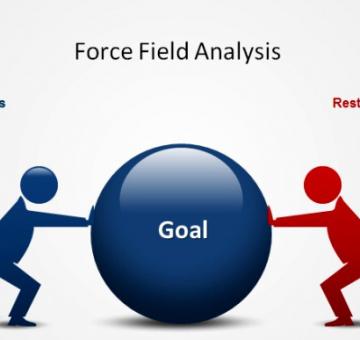Pareto Analysis

What is this?
A Pareto analysis is a quality control tool. It is a simple technique for prioritizing problem-solving and decision making so that the first action you take, would have a multiplier effect to solving problems.The Pareto analysis provides a graphic image of the Pareto principle, a theory maintaining that 80% of the output in a given situation or system is produced by 20% of the input.
When and why is this used?
Pareto analysis is useful for analyzing what problems need attention first. By using this tool, you can prioritize the actions that will most likely improve the situation. The tool is effective when it comes to decreasing costs and reaching more efficient solutions. Pareto analysis will help you know which problems are easier to solve using graphical representations.
How is this tool used?
Start by downloading EgyptInnovate’s template and follow the coming steps
Step1 (Create a list of your problems):
First, write a list of all of the problems that you need to solve. You can do this by getting reviews from your clients and team members. Check any previous surveys, or customer service log if they are available.
Step 2 (Identify the root cause of each problem):
For each problem you listed, identify its root cause. You can do this using brainstorming or fishbone techniques.
Step 3 (Give a weight/score to each problem):
Now you need to give a quantitative value to each problem. The scoring method you use depends on the nature of the problem you're trying to solve. For example, if you're trying to improve customer satisfaction, you might score them based on the number of complaining customers from each problem.
Step 4 (Classify problems by root cause and group them together):
Afterwards, you group problems together by cause. For example, if two of your problems are caused by bad product quality, then put these two problems in the same group.
Step 5 (Calculate the score):
Add the score of problems in each cause group. The group with the top score is your highest priority, and the group with the lowest score is your lowest priority.
Step 6 (Take Action):
Now you need to deal with the causes of your problems, dealing with your top-priority problem or group of problems first. Keep in mind that low scoring problems may not be worth bothering with; solving these problems may cost you more than the solutions are worth.
Hints for using this tool
Pareto Analysis not only shows you the most important problem to solve, it also gives you a score showing how severe each problem is.
Case Study
Ahmed leads a team the customer service of a car’s service station. He is working on solving customer’s complaints in order to increase customer satisfaction. Firstly, he lists all the problems that came to the station. Afterwards with the help of his team, he tries to get the root cause of every problem. He gave a score to every problem by the number of complaining customers to each on.

Ahmed then groups problems with the same root cause together. He scores each problem root cause by the number of complaints:
1. Few customer service employees = 16 complaints
2. Poor planning and organization = 11 complaints
3. Lack of training for mechanical engineers = 26 complaints
According to Pareto Analysis, Ahmed will gain the greatest benefits if the service station owners focused on training their engineers. Afterwards, hiring some customer services engineers could act for their own good. If he hadn’t used the Pareto analysis, he might have thought of any other solution and didn’t consider what will bring him the biggest benefits.
Pros and Cons
Pareto analysis shows you where to focus you efforts and how to use limited resources. On the opposite, the results of the tool depend on the person who uses it, therefore it requires a well-trained member who has relatively good problem-solving skills.





































































EgyptInnovate site is not responsible for the content of the comments